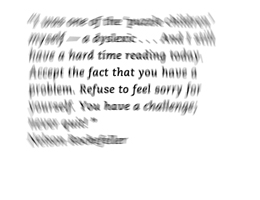Low vision is a visual impairment that cannot be fully corrected with regular eyeglasses, contact lenses, medication or surgery. Despite all conventional treatment, vision remains blurred or distorted, and it interferes with the ability to perform every day activities such as reading, writing, and shopping. Millions of Americans lose some of their vision every year due to a variety of eye conditions such as Diabetic Retinopathy, Glaucoma, Macular Degeneration or Retinitis Pigmentosa. If you are among the growing number of people living with low vision,you can still live independently with the help of low vision aids.
Eye Conditions
Keratoconus
 Keratoconus
is a progressive eye condition in which the cornea of the eye thins and begins
to bulge into a cone-like shape. The cornea is the transparent front part of the
eye that covers the iris, pupil and anterior chamber. Together with the eye’s
lens, the cornea reflects light. The cornea is responsible for approximately
two-thirds of the eye’s total optical power.
Keratoconus
is a progressive eye condition in which the cornea of the eye thins and begins
to bulge into a cone-like shape. The cornea is the transparent front part of the
eye that covers the iris, pupil and anterior chamber. Together with the eye’s
lens, the cornea reflects light. The cornea is responsible for approximately
two-thirds of the eye’s total optical power.
Graves' Disease
 Graves’
Disease is an autoimmune disease in which the thyroid gland is overactive,
producing high levels of thyroid hormones. These high levels of thyroid hormones
are referred to as hyperthyroidism. In a small percentage of people with Graves’
Disease, the fat and muscle behind the eyes are also affected, causing various
symptoms.
Graves’
Disease is an autoimmune disease in which the thyroid gland is overactive,
producing high levels of thyroid hormones. These high levels of thyroid hormones
are referred to as hyperthyroidism. In a small percentage of people with Graves’
Disease, the fat and muscle behind the eyes are also affected, causing various
symptoms.
Dyslexia
 Dyslexia
is a learning disability that makes reading, writing, spelling and sometimes
speaking difficult. It is caused by an impairment of the brain’s ability to
translate images received from the eyes or sounds received from the ears into
understandable language. Dyslexia is not an intellectual disability, since
dyslexia and IQ are not interrelated.
Dyslexia
is a learning disability that makes reading, writing, spelling and sometimes
speaking difficult. It is caused by an impairment of the brain’s ability to
translate images received from the eyes or sounds received from the ears into
understandable language. Dyslexia is not an intellectual disability, since
dyslexia and IQ are not interrelated.
Color Blindness
 Color
blindness is the inability to distinguish the differences between certain
colors. Color blindness results from an absence of color-sensitive pigment in
the cone cells of the retina, the nerve layer at the back of the eye.
Color
blindness is the inability to distinguish the differences between certain
colors. Color blindness results from an absence of color-sensitive pigment in
the cone cells of the retina, the nerve layer at the back of the eye.
Choroideremia
 Choroideremia
is a genetic condition that causes progressive loss of vision due to
degeneration of the retina and the choroid. Night blindness is the most common
first symptom. As the disease progresses, there is loss of peripheral vision
(tunnel vision) and later a loss of central vision.
Choroideremia
is a genetic condition that causes progressive loss of vision due to
degeneration of the retina and the choroid. Night blindness is the most common
first symptom. As the disease progresses, there is loss of peripheral vision
(tunnel vision) and later a loss of central vision.
Albinism
 Albinism
refers to a group of conditions in which people have little or no pigment in
their eyes, skin or hair. Albinism occurs due to inherited altered genes which
do not make the usual amounts of pigment called ‘melanin’. Based on the amount
of melanin in the eyes, different types of albinism can be distinguished. What
the different types have in common is that they are all associated with vision
problems.
Albinism
refers to a group of conditions in which people have little or no pigment in
their eyes, skin or hair. Albinism occurs due to inherited altered genes which
do not make the usual amounts of pigment called ‘melanin’. Based on the amount
of melanin in the eyes, different types of albinism can be distinguished. What
the different types have in common is that they are all associated with vision
problems.
Refractive Errors
 Refractive
errors are errors in which the eye’s ability to focus light is affected, causing
reduced visual capacity. This is the most common and well-known eye condition
including various types.
Refractive
errors are errors in which the eye’s ability to focus light is affected, causing
reduced visual capacity. This is the most common and well-known eye condition
including various types.
Usher Syndrome
 Usher
Syndrome is the most common condition affecting both vision and hearing. It is a
rare genetic disorder that is the main cause of deaf-blindness. The major
symptoms of Usher Syndrome are loss of hearing and an eye condition called
Retinitis Pigmentosa.
Usher
Syndrome is the most common condition affecting both vision and hearing. It is a
rare genetic disorder that is the main cause of deaf-blindness. The major
symptoms of Usher Syndrome are loss of hearing and an eye condition called
Retinitis Pigmentosa.
Stargardts
 Stargardt’s
Disease is an inherited eye disorder that causes loss of central vision at a
young age. It affects the macula, the area of the eye responsible for central
vision and seeing colour and fine details. The symptoms are very similar to
Age-Related Macular Degeneration. Stargardt’s Disease causes progressive vision
loss and, in some cases, near blindness.
Stargardt’s
Disease is an inherited eye disorder that causes loss of central vision at a
young age. It affects the macula, the area of the eye responsible for central
vision and seeing colour and fine details. The symptoms are very similar to
Age-Related Macular Degeneration. Stargardt’s Disease causes progressive vision
loss and, in some cases, near blindness.



